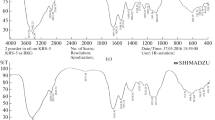Abstract
One of the promising directions in modern pharmacology is the creation of biologically active drugs based on substances of natural origin. Of particular interest in this regard are peptides of fish skin mucus. The aim of the work was to purify and isolate the protein fractions—thromboplastin (clotting factor III, tissue factor, TF) and prothromboplastin (clotting factor XI, F11) from fish skin mucus using affine and ion-exchange chromatography as well as mass spectrometry. The mucus of two fish species was used as the material for the study: the African clarias catfish (Clarias gariepinus Burchell, 1822) and the carp (Cyprinus carpio carpio Linnaeus, 1758). Among the identified proteins, it was not possible to find proteins that have similar or highly homologous amino acid sequences with human thromboplastin and prothromboplastin. However, given the ability of fish skin mucus to stimulate coagulation, as well as the ability of individual fractions to interact with antibodies to thromboplastin and prothromboplastin, it can be argued that the identified proteins have epitopes that are homologous in function to thromboplastin or prothromboplastin, thanks to which components of fish skin mucus can reduce the time of coagulation.



Similar content being viewed by others
REFERENCES
Solov’ev, V.B. and Malashchenko, T.A., Isolation and study of the physicochemical properties of peptides from mucus of mollusks, Actual Sci., 2016, vol. 2, no. 6, pp. 11–13.
Ksenofontov, A.M., Nikiforov, P.V., and Fedorov, A.P., An experimental method for using biological glue based on a sturgeon swimming bladder during liver operations, Zdorov’e Obraz.XXI Veke, 2012, vol. 14, no. 1, pp. 223–224.
Urymbaeva, L.K., Dorofeeva, N.V., and Machneva, I.V., Major directions of drug development, Materialy X Mezhdunarodnoi studencheskoi nauchnoi konferentsii “Studencheskii nauchnyi forum” (Proc. X International Student Scientific Conference Student Scientific Forum). https://scienceforum.ru/2018/article/2018000569.
Lewis, R.W., Fish cutaneous mucus: A new source of skin surface lipid, Lipids, 1970, vol. 5, no. 11, pp. 947–949.
Shephard, K.L., Functions for fish mucus, Rev. Fish Biol. Fish., 1994, vol. 4, no. 4, pp. 401–429.
Rothwell, S.W., Settle, T., and Wallace, S., The long term immunological response of swine after two exposures to a salmon thrombin and fibrinogen hemostatic bandage, Biologicals, 2010, vol. 38, no. 6, pp. 619–628.
Peptides from Fish: Pharmacological Properties and Methods of Obtaining. http://ideal-pharma.ru/baza/peptidy-iz-ryb-farmakologicheskie-svojstva-i-sposoby-polucheniya/.
Lebedeva, N.E., Vosilene, M.Z., and Golovkina, T.V., Change in the biochemical composition of the external mucus of fish under the influence of environmental factors, Dokl. Ross. Akad. Nauk, 1998, vol. 362, no. 5, pp. 713–715.
Vinogradov, E.V., Content of red blood cells in the skin mucus of carps selected for resistance to adverse environmental factors, Vestn. Gos. Polyarn. Akad., 2011, no. 1, p. 40.
Rakers, S., et al., ‘Fish matters:’ The relevance of fish skin biology to investigative dermatology, Exp. Dermatol., 2010, vol. 19, no. 4, pp. 313–324.
Fomina, L.L., Isolation and study of the active components of fish skin mucus as the basis of a hemostatic preparation, Research Report no. 878-18 of July 9, 2018.
Fomina, L.L., Kulakova, T.S., Zhunina, O.A., Oshurkova, Yu.L., and Vaitsel’, A.E., Assessment of hemostatic activity of mucus of the skin of fish invitro, Aktual’n. Vopr. Vet. Biol., 2018, no. 4, pp. 7–11.
Fomina, L.L., Kulakova, T.S., Zhunina, O.A., Oshurkova, Yu.L., and Vaitsel, A.E., Hemostatic activity of the mucus of the skin of fish, Res. J. Pharm. Biol. Chem. Sci., 2018, vol. 9, no. 6, pp. 1130–1136.
Schultz, I.R., Skillman, A., Nicolas, J.-M., Cyr, D.G., and Nagler, J.J., Short-term exposure to 17 alpha-ethynylestradiol decreases the fertility of sexually maturing male rainbow trout (Oncorhynchus mykiss), Environ. Toxicol. Chem., 2003, vol. 22, no. 6, pp. 1272–1280.
Russia developed new hemostatic agent, Military Industrial Courier. http://vpk-news.ru/news/25817.
Funding
The study was financially supported by the Russian Foundation for Basic Research and the government of the Vologda oblast within the framework of the scientific project no. 18-44-350002.
Author information
Authors and Affiliations
Corresponding authors
Ethics declarations
Conflict of interests. The authors declare that they have no conflict of interest.
Statement on the welfare of animals. All applicable international, national, and/or institutional guidelines for the care and use of animals were followed.
Additional information
Translated by S. Avodkova
About this article
Cite this article
Fomina, L.L., Oshurkova, Y.L., Junina, O.A. et al. Study of Protein Components of Fish Skin Mucus with Thrombogenic Activity. Russ. Agricult. Sci. 46, 399–403 (2020). https://doi.org/10.3103/S1068367420040060
Received:
Revised:
Accepted:
Published:
Issue Date:
DOI: https://doi.org/10.3103/S1068367420040060




